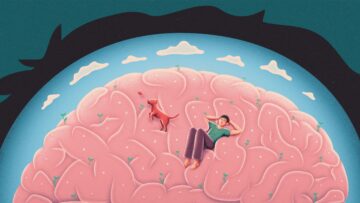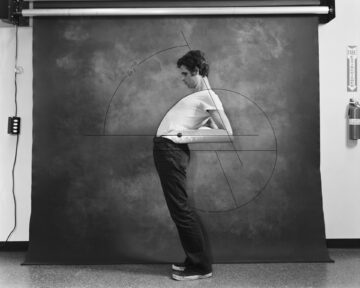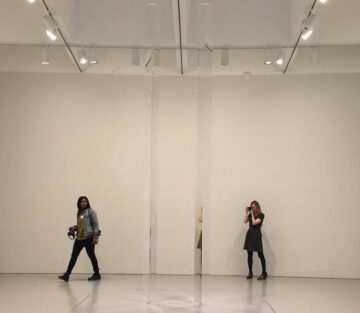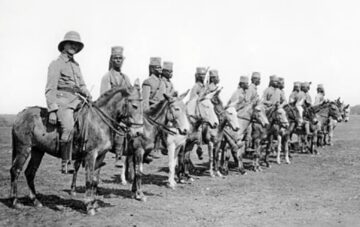Category: Archives
Read Your Way Through Lagos
Stephen Buoro at the NYT:
 Lagos is an experience of a lifetime. The city will enchant and wreck you. The bedlam. The 15-minute journeys that stretch to five hours because of traffic jams. The multitudes everywhere you turn, each individual fizzing with hope and energy and stories, each unfazed by the maladies of living here — crumbling infrastructure, an oppressive kleptocratic government, the daily whiff of disasters brewing.
Lagos is an experience of a lifetime. The city will enchant and wreck you. The bedlam. The 15-minute journeys that stretch to five hours because of traffic jams. The multitudes everywhere you turn, each individual fizzing with hope and energy and stories, each unfazed by the maladies of living here — crumbling infrastructure, an oppressive kleptocratic government, the daily whiff of disasters brewing.
Lagos, or Èkó (as it’s known in Yoruba), is a city of paradoxes, of extremes. Every condition exists prodigiously here. This is why Lagosians sometimes quip, “Èkó no dey carry last”: “Lagos never ranks last in anything.” Take housing. In the neighborhoods of Lekki and Ikoyi, you’ll find mansions posher than any in Manhattan or Mayfair. But across the Lagos Lagoon, you’ll find a floating city: thousands of families living in shacks built over stinking waters.
more here.
Saturday Poem
—two small poems:
Lady
The Universe is a lady
Holding within her the unborn light—
Our Lady, Nostre Dame.
It is fitting that Nostradamus could predict the future.
That is a function of our lady,
We the tealeaves.
—by Jack Kerouac
A Man Said to the Universe
A man said to the universe:
“Sir, I exist!”
“However,” replied the universe,
“The fact has not created in me
A sense of Obligation.”
—by Stephen Crane
Friday, February 9, 2024
How a Nuclear Weapons Lab Helped Crack a Serial-Killer Case
Sarah Scoles at Undark:
 Nuclear weapons laboratories don’t often help solve serial-killer cases. But in the investigation of Efren Saldivar, data from such a lab provided the clinching evidence that led to his conviction on six counts of murder.
Nuclear weapons laboratories don’t often help solve serial-killer cases. But in the investigation of Efren Saldivar, data from such a lab provided the clinching evidence that led to his conviction on six counts of murder.
As a respiratory therapist at Glendale Adventist Medical Center in California, where he started working in 1989, Saldivar was at times tasked with caring for terminally ill patients. One day in 1998, according to a report from the Los Angeles Times, the hospital got a tip that someone had “helped a patient die fast.”
Hospital officials had previously investigated Saldivar because of an internal tip about alleged misconduct — he had a reputation for having a “magic syringe,” as one coworker reported. Police soon became involved, calling Saldivar in for questioning.
More here.
What Your Brain Is Doing When You’re Not Doing Anything
Nora Bradford in Quanta:
 But is your brain active even when you’re zoning out on the couch?
But is your brain active even when you’re zoning out on the couch?
The answer, researchers have found, is yes. Over the past two decades they’ve defined what’s known as the default mode network, a collection of seemingly unrelated areas of the brain that activate when you’re not doing much at all. Its discovery has offered insights into how the brain functions outside of well-defined tasks and has also prompted research into the role of brain networks — not just brain regions — in managing our internal experience.
More here.
Atif Aslam: “Sochta Hoon Keh Woh Kitnay Masoom Thay”
How changing the metaphors we use can change the way we think
Benjamin Santos Genta in Aeon:
 When used properly, metaphors enhance speech. But correctly dosing the metaphorical spice in the dish of language is no easy task. They ‘must not be far-fetched, or they will be difficult to grasp, nor obvious, or they will have no effect’, as Aristotle already noted nearly 2,500 years ago. For this reason, artists – those skilled enhancers of experience – are generally thought to be the expert users of metaphors, poets and writers in particular.
When used properly, metaphors enhance speech. But correctly dosing the metaphorical spice in the dish of language is no easy task. They ‘must not be far-fetched, or they will be difficult to grasp, nor obvious, or they will have no effect’, as Aristotle already noted nearly 2,500 years ago. For this reason, artists – those skilled enhancers of experience – are generally thought to be the expert users of metaphors, poets and writers in particular.
Unfortunately, it is likely this association with the arts that has given metaphors a second-class reputation among many thinkers. Philosophers, for example, have historically considered it an improper use of language. A version of this thought still holds significant clout in many scientific circles: if what we care about is the precise content of a sentence (as we often do in science) then metaphors are only a distraction. Analogously, if what we care about is determining how nutritious a meal is, its presentation on the plate should make no difference to this judgment – it might even bias us.
By the second half of the 20th century, some academics (especially those of a psychological disposition) began turning this thought upside down: metaphors slowly went from being seen as improper-but-inevitable tools of language to essential infrastructure of our conceptual system.
More here.
Friday Poem
Because the question of good and evil has been tormenting us since the moment
we plucked a fruit from the tree of knowledge, perhaps it’s worthwhile to remind
ourselves that there have been people who didn’t take to heart that pair of
opposite notions. For them, as for Jelaluddin Rumi, nonattachment meant simply
that you could lie down in a meadow.
Out beyond ideas of wrongdoing and rightdoing,
there is a field. I’ll meet you there.
When the soul lies down in the grass,
the world is too full to talk about.
Ideas, language, even the phrase each other
doesn’t make any sense.
by Jelaluddin Rumi
translated by Coleman Barks and John Moyne
from A Book of Luminous Things
Harvest Books, 1996
A Pioneering Wizard of West Coast Photo-Conceptualism
Chris Wiley in The New Yorker:
 Robert Cumming, a pioneering wizard of West Coast photo-conceptualism, died in 2021, at the age of seventy-eight. He achieved brief semi-stardom in the nineteen-eighties, when he mounted solo exhibitions at both moma and the Whitney, but he failed to achieve the kind of lasting fame accorded to his close contemporaries in the L.A. scene, like Ed Ruscha, the master of deadpan Pop, or John Baldessari, Ruscha’s wackier counterpart, or even Cumming’s close friend and studio-mate William Wegman. Posthumously, though, Cumming has been experiencing a much deserved mini-revival. At Jean-Kenta Gauthier gallery, in Paris, a recent three-part series of exhibitions amounted to something like a retrospective. A new book, “Very Pictorial Conceptual Art,” edited by the writer and curator David Campany, collects Cumming’s photographic work from 1968 until 1980. The filmmaker Noah Rosenberg is making a feature-length documentary on Cumming, “On Closer Inspection,” a truncated version of which screened during this year’s Paris Photo art fair.
Robert Cumming, a pioneering wizard of West Coast photo-conceptualism, died in 2021, at the age of seventy-eight. He achieved brief semi-stardom in the nineteen-eighties, when he mounted solo exhibitions at both moma and the Whitney, but he failed to achieve the kind of lasting fame accorded to his close contemporaries in the L.A. scene, like Ed Ruscha, the master of deadpan Pop, or John Baldessari, Ruscha’s wackier counterpart, or even Cumming’s close friend and studio-mate William Wegman. Posthumously, though, Cumming has been experiencing a much deserved mini-revival. At Jean-Kenta Gauthier gallery, in Paris, a recent three-part series of exhibitions amounted to something like a retrospective. A new book, “Very Pictorial Conceptual Art,” edited by the writer and curator David Campany, collects Cumming’s photographic work from 1968 until 1980. The filmmaker Noah Rosenberg is making a feature-length documentary on Cumming, “On Closer Inspection,” a truncated version of which screened during this year’s Paris Photo art fair.
More here.
Black athletes who transformed American sports
Seth Berkman in Stacker:
 For much of the late 19th and early 20th centuries, Black athletes were forbidden from competing as professional athletes. But trailblazers like Jackie Robinson and Althea Gibson slowly chipped away at color barriers in American sports and opened up the floodgates for today’s stars to thrive.
For much of the late 19th and early 20th centuries, Black athletes were forbidden from competing as professional athletes. But trailblazers like Jackie Robinson and Althea Gibson slowly chipped away at color barriers in American sports and opened up the floodgates for today’s stars to thrive.
Stacker compiled a list of Black athletes who transformed American sports using information from professional league record books, statistical databases, museums, historical articles, and other sources. Included in this list are names you might expect like the incomparable Willie Mays, who was idolized by legends like Ted Williams but also pushed for the integration of baseball by organizing offseason traveling tours that featured Black ballplayers. Muhammad Ali’s accomplishments in the ring and his activism outside of the ropes surely earn him a spot, but there are also pugilists like Jack Johnson, who was the first Black heavyweight champion of the world. Despite his athletic prowess, Johnson was shadowed by the enforcement of arcane laws throughout most of his life.
Do you know the name of the first Black hockey player to play in the National Hockey League? What about the speed skater who made history at the 2006 Olympics, or the former track star turned bobsled Olympic medalist? We dig into those biographies and more, paying respect to figures that continue to influence American society. While this list is not exhaustive, the accomplishments of those included are sure to inspire. From overcoming diseases to segregation, learn about the legends of American sport who are responsible for the way we watch games today.
More here. (Note: In honor of Black History Month, at least one post will be devoted to its 2024 theme of “African Americans and the Arts” throughout the month of February)
Thursday, February 8, 2024
Art as Experience: Robert Irwin’s “Untitled (Acrylic Column)”
Morgan Meis at Slant Books:
 Robert Irwin died a few months ago. He was 95 years old, so this was not a great tragedy. I didn’t know the man personally, but I have the sense that he lived a good and fulfilled life. He was quite famous within the more or less refined corners of the international artworld. He’ll probably always be most associated with the so-called Light and Space Movement that emerged in California, more properly southern California, in the late 1960s. Judy Chicago also did important works from within the Light and Space sensibility. James Turrell. Mary Corse. If these names mean anything to you. Quite fine if they don’t.
Robert Irwin died a few months ago. He was 95 years old, so this was not a great tragedy. I didn’t know the man personally, but I have the sense that he lived a good and fulfilled life. He was quite famous within the more or less refined corners of the international artworld. He’ll probably always be most associated with the so-called Light and Space Movement that emerged in California, more properly southern California, in the late 1960s. Judy Chicago also did important works from within the Light and Space sensibility. James Turrell. Mary Corse. If these names mean anything to you. Quite fine if they don’t.
It is hard to describe the works of Robert Irwin. A typical work by Robert Irwin is, for instance, a piece called Untitled (Acrylic Column), which is generally listed as having the dates 1969-2011. I guess that’s because he kept making and remaking the piece over those years. It’s a simple work of art. Basically it’s a free-standing column of see-through acrylic about fifteen feet high.
More here.
Deepfake scammer walks off with $25 million in first-of-its-kind AI heist
Benj Edwards in Ars Technica:
 On Sunday, a report from the South China Morning Post revealed a significant financial loss suffered by a multinational company’s Hong Kong office, amounting to HK$200 million (US$25.6 million), due to a sophisticated scam involving deepfake technology. The scam featured a digitally recreated version of the company’s chief financial officer, along with other employees, who appeared in a video conference call instructing an employee to transfer funds.
On Sunday, a report from the South China Morning Post revealed a significant financial loss suffered by a multinational company’s Hong Kong office, amounting to HK$200 million (US$25.6 million), due to a sophisticated scam involving deepfake technology. The scam featured a digitally recreated version of the company’s chief financial officer, along with other employees, who appeared in a video conference call instructing an employee to transfer funds.
Due to an ongoing investigation, Hong Kong police did not release details of which company was scammed.
Deepfakes utilize AI tools to create highly convincing fake videos or audio recordings, posing significant challenges for individuals and organizations to discern real from fabricated content.
More here.
Abdulrazak Gurnah: The tragedies inflicted on the people of East Africa as a result of European rivalries are belittled and forgotten
Abdulrazak Gurnah in Granta:
 I first came across Friedrich Schiller and his work in the aftermath of the revolution in Zanzibar in January 1964. Among the victorious insurgents was a left-leaning group called the Umma Party. There is a long tale to be told about the formation of this group and its fate. In the early 1960s, members of the Umma, right under the eyes of the British colonial administration, went off to Cuba for military training. The connection with Cuba meant that the Umma had friends and supporters in the Soviet bloc of nations. After the revolution, the group had significant influence in the new power-balance in the government. It was no doubt through the influence of the Umma faction, as well as through expediency, that the post-revolutionary government invited or accepted the fraternal assistance of the ‘socialist’ group of nations.
I first came across Friedrich Schiller and his work in the aftermath of the revolution in Zanzibar in January 1964. Among the victorious insurgents was a left-leaning group called the Umma Party. There is a long tale to be told about the formation of this group and its fate. In the early 1960s, members of the Umma, right under the eyes of the British colonial administration, went off to Cuba for military training. The connection with Cuba meant that the Umma had friends and supporters in the Soviet bloc of nations. After the revolution, the group had significant influence in the new power-balance in the government. It was no doubt through the influence of the Umma faction, as well as through expediency, that the post-revolutionary government invited or accepted the fraternal assistance of the ‘socialist’ group of nations.
Our newly-created army was soon wearing Cuban-style forage caps and marching the Soviet goose-step.
More here.
Abdus Salam: A unifying force (2024)
Turbocharged CAR-T cells melt tumours in mice — using a trick from cancer cells
Asher Mullard in Nature:
 Cancer cells are the ultimate survivors, riddled with mutations that let them thrive when healthy cells would die. These same mutations can boost the ability of game-changing cell therapies to quash cancer, a study in mice shows1.
Cancer cells are the ultimate survivors, riddled with mutations that let them thrive when healthy cells would die. These same mutations can boost the ability of game-changing cell therapies to quash cancer, a study in mice shows1.
Among these therapies are chimeric antigen receptor (CAR) T cells, which are already used to treat several types of blood cancer. The new study shows that engineered CAR T cells carrying a mutation that was first found in cancerous T cells can vanquish tumours that don’t respond to current CAR-T therapies.
“It’s a beautiful piece of work and opens the door for better CAR-T therapies in the future,” says Madeleine Duvic, a dermatologist and cancer researcher at the MD Anderson Cancer Center in Houston, Texas, who was not involved in the work.
“Natural T-cell function isn’t good enough. We need to explore the extremes of T-cell function,” says Kole Roybal, an immunologist at the University of California, San Francisco, and co-author of the new paper. What better place to start than with the mutations that turn healthy T cells into hardier, cancerous ones?
More here.
Black Authors that Impacted the Culture of the USA
From EssayService:
 On this page, you will be introduced to 15 black authors that will have their names forever ingrained in history and their books read by millions worldwide.
On this page, you will be introduced to 15 black authors that will have their names forever ingrained in history and their books read by millions worldwide.
ZORA NEALE HURSTON THEIR EYES WERE WATCHING GOD: THE BELOVED CLASSIC
SWEAT BY ZORA NEALE HURSTON: SHORT STORY
More here. (Note: In honor of Black History Month, at least one post will be devoted to its 2024 theme of “African Americans and the Arts” throughout the month of February)
Thursday Poem
Late October Camping in the Sawtooths
Sunlight climbs the snowpeak
…….. glowing pale red
Cold sinks into the gorge
…….. shadows merge.
Building a fire of pine twigs
…….. at the foot of a cliff.
Drinking hot tea from a tin cup
…….. in the chill air—
Pull on a sweater and roll a smoke.
…….. a leaf
…….. beyond fire
Sparkles with nightfall frost.
by Gary Snyder
from A Book of Luminous Things
Harvest Books, 1996
Who Will Attend To The Machines’ Writing?
Richard Hughes Gibson at The Hedgehog Review:
 Generative artificial intelligence is a headspace and a technology—as much an event playing out in our minds as it is a material reality emerging at our fingertips. Fast and fluent, AI writing and image-making machines inspire in us visions of doomsday or a radiant posthuman future. They raise existential questions about themselves and ourselves. And, not least, they should lead us to reconsider certain neglected thinkers of recent intellectual history.
Generative artificial intelligence is a headspace and a technology—as much an event playing out in our minds as it is a material reality emerging at our fingertips. Fast and fluent, AI writing and image-making machines inspire in us visions of doomsday or a radiant posthuman future. They raise existential questions about themselves and ourselves. And, not least, they should lead us to reconsider certain neglected thinkers of recent intellectual history.
Consider a few of the bolder claims made by experts. Two years ago, Blaise Agüera y Arcas, vice president of Google Research, had already declared the end of the animal kingdom’s monopoly on language on the strength of Google’s experiments with large language models. LLMs, he argued, “illustrate for the first time the way that language understanding and intelligence can be dissociated from all the embodied and emotional characteristics we share with each other and with many other animals.”1 In a similar vein, the Stanford University computer scientist Christopher Manning has argued that if “meaning” constitutes “understanding of the network of connections between linguistic form and other things,” be they “objects in the world or other linguistic forms,” then “there can be no doubt” that LLMs can “learn meanings.”
more here.
Claude Shannon – Father of the Information Age
The Frenchwoman From Indianapolis
Rosa Lyster at The Paris Review:
Here is Norman Mailer in his fine black boots, high-cut and shiny and very snug on the ankle, like something you might pick out if you were the prop master for an expensive production of Richard III. Sweating a bit under the TV lights, he seems to be doing an imitation of a scowl, as if to gesture toward his reputation as a guy who goes around scowling. He sits angled toward the host, Dick Cavett, who bends slightly away from him, as do the other two guests. One of them is Gore Vidal. Like Mailer, Vidal is doing an impersonation of himself. He strikes various languorous attitudes as the camera begins to roll, reclining deeper into his chair as Mailer leans forward, toying idly with his glasses and smiling as Mailer yaps and bares his teeth. A cat and a dog.
Compared to these two, both positively radiant with the excitement of showing off, the third guest seems to have been invited on by mistake. She is, basically, an old lady.
more here.
